Marrakech: A Journey Through Time
Join our free walking tour to explore the architectural wonders and cultural treasures of Marrakech, where history meets culinary delights and vibrant culture.
Time
3 Hours
Stops
9 Places
Distance
4.5 km
Koutoubia Mosque
Begin your tour at the iconic Koutoubia Mosque, the largest mosque in Marrakech, known for its stunning minaret and beautiful gardens.
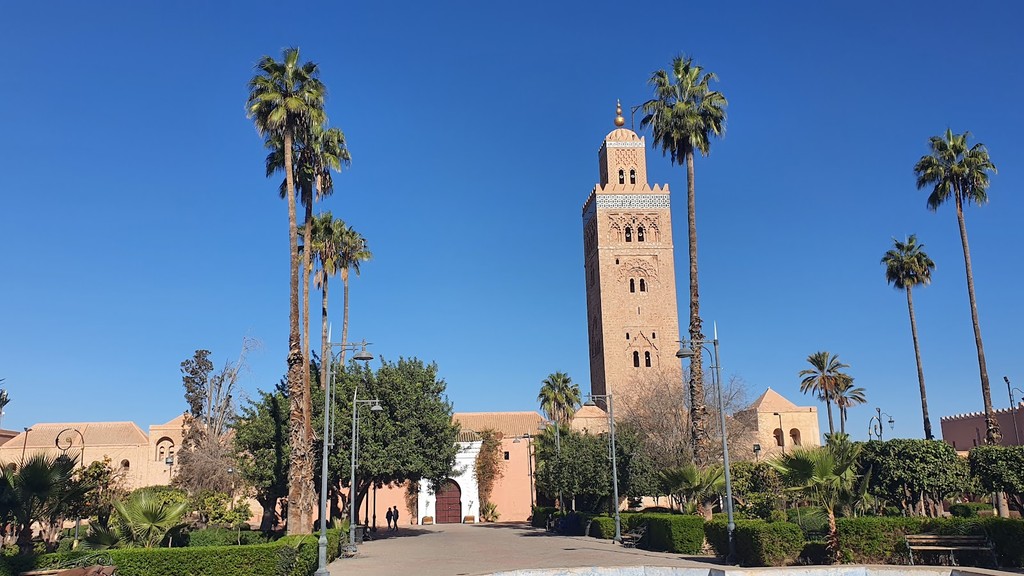
Koutoubia Mosque (Source: Google Maps)
The Koutoubia Mosque stands as the largest mosque in Marrakech, a symbol of the city’s rich Islamic heritage. Completed in the 12th century during the reign of the Almohad dynasty, its stunning 77-meter tall minaret is adorned with intricate geometric patterns and serves as a guiding point for the faithful. The mosque's architecture reflects the classic Islamic style, with its harmonious proportions and elegant arches. Surrounded by beautifully landscaped gardens, the Koutoubia Mosque is not just a place of worship but also a cultural landmark, drawing visitors who admire its beauty and historical significance.
Bab Agnaou
Walk to Bab Agnaou, one of the 19 gates of Marrakech, showcasing impressive Almohad architecture and serving as a historical entry point to the medina.
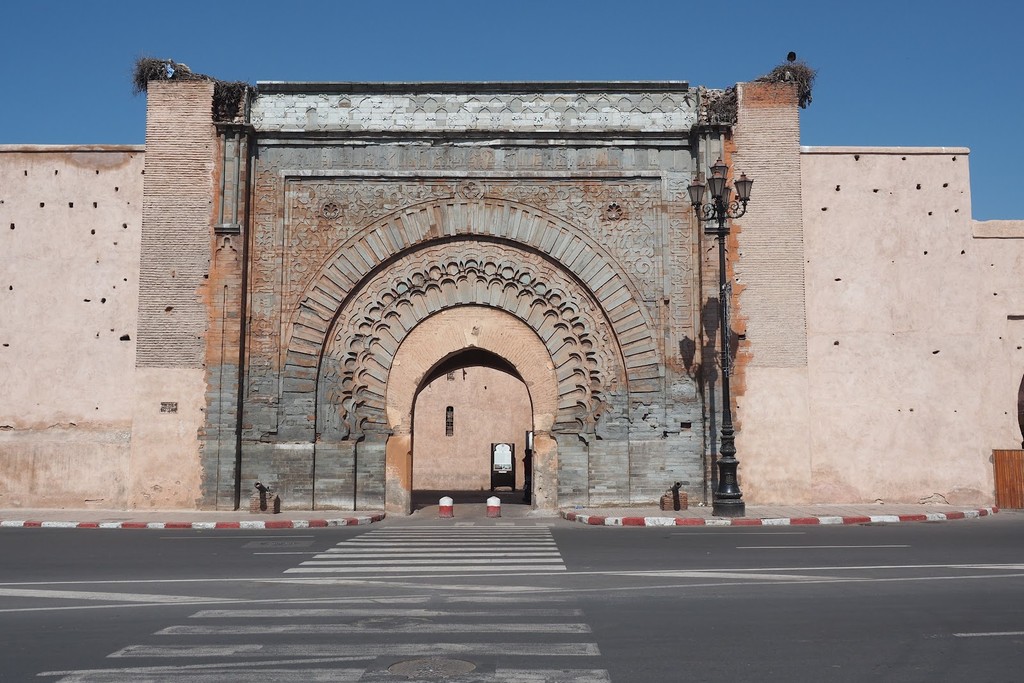
Bab Agnaou (Source: Google Maps)
Bab Agnaou is one of the most notable gates of Marrakech, showcasing the remarkable Almohad architectural style. Built in the 12th century, this grand gate served as the main entrance to the royal palace and the bustling medina. Its impressive stonework features intricate carvings and a striking horseshoe arch, symbolizing the city’s historical importance. Bab Agnaou is not just an architectural wonder; it also embodies the rich history of the Almohad dynasty, which played a pivotal role in the development of Marrakech as a cultural and political center in Morocco.
Saadian Tombs
Explore the Saadian Tombs, a hidden gem from the Saadian dynasty era, known for its intricate tile work and peaceful gardens.
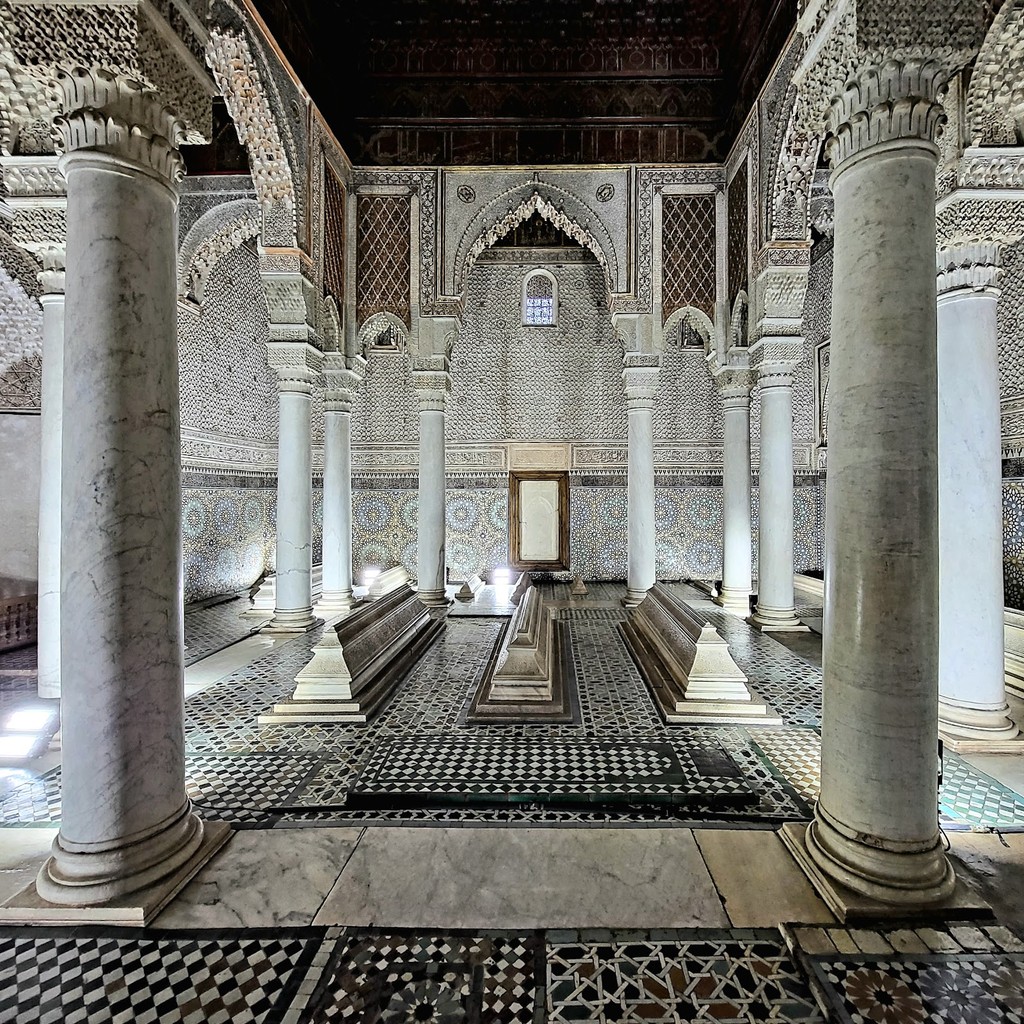
Saadian Tombs (Source: Google Maps)
The Saadian Tombs date back to the 16th century and are a significant historical site in Marrakech, showcasing the artistry of the Saadian dynasty. Hidden for centuries, these tombs were rediscovered in 1917 and are now celebrated for their exquisite tile work and intricate stucco designs. The site features a serene garden that houses the tombs of Sultan Ahmed al-Mansour and his family, surrounded by stunning mosaics that reflect the artistic heritage of Morocco. The Saadian Tombs are a testament to the opulence of the Saadian era and offer a glimpse into the country’s rich history and cultural significance.
El Badi Palace
Discover the ruins of the once-grand El Badi Palace, offering a glimpse into the opulence of Sultan Ahmad al-Mansur's reign.
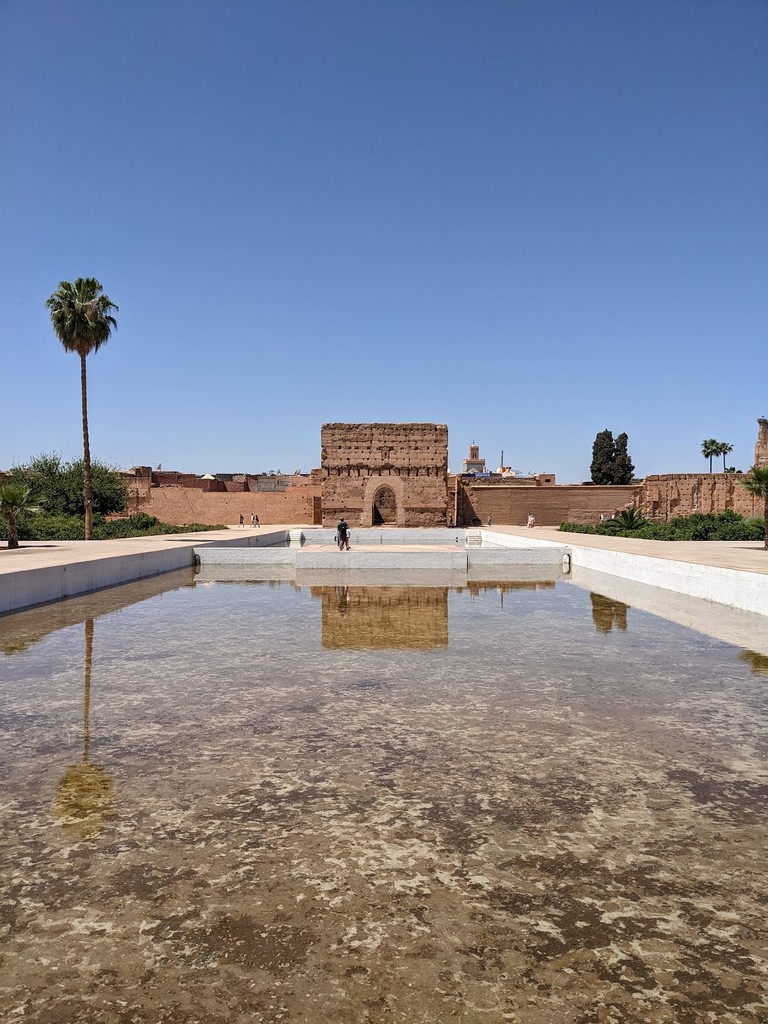
El Badi Palace (Source: Google Maps)
El Badi Palace, once a magnificent symbol of power, was commissioned by Sultan Ahmad al-Mansur in the late 16th century. Although now in ruins, the palace's vast grounds and remnants of its grandeur tell a story of opulence and artistry. The original structure was adorned with gold, marble, and intricate tile work, showcasing the wealth of the Saadian dynasty. The palace complex includes beautiful gardens and reflecting pools, which were designed to create a serene atmosphere. Today, El Badi Palace is a historical site that attracts visitors eager to learn about the architectural marvels and royal history of Marrakech.
Kosybar
Take a break at Kosybar, a charming establishment known for its rooftop views and delicious Moroccan cuisine, perfect for a lunch stop.
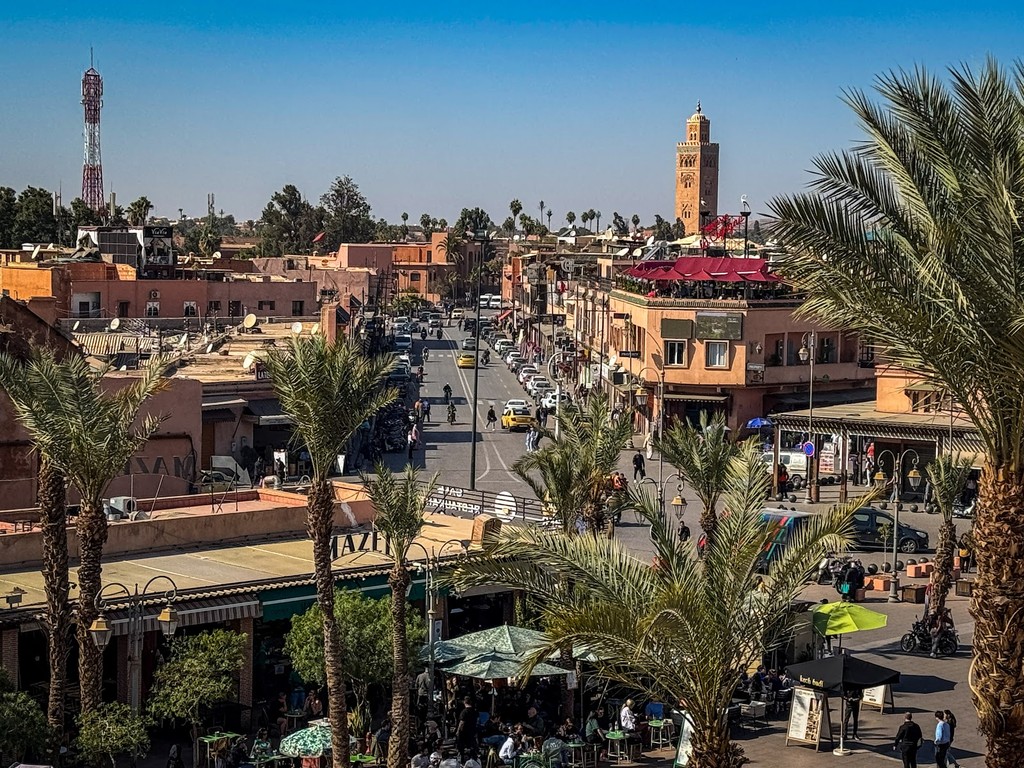
Kosybar (Source: Google Maps)
Mellah District
Stroll through the historic Mellah, the Jewish quarter, to experience a unique cultural atmosphere and discover its rich history.
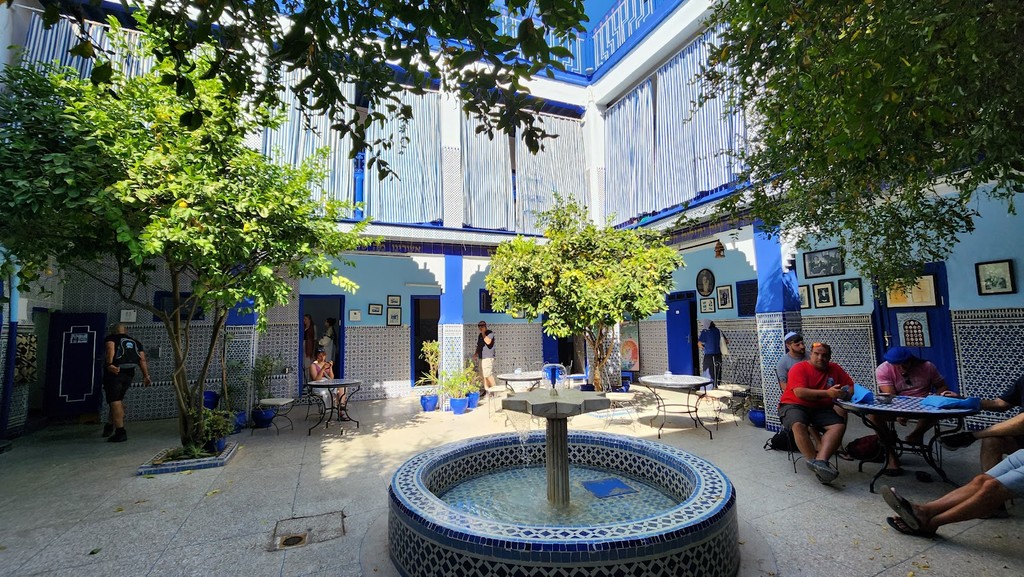
Mellah District (Source: Google Maps)
The Mellah District, known as the historic Jewish quarter of Marrakech, offers a unique glimpse into the city's diverse cultural tapestry. Established in the 16th century, it was once home to a vibrant Jewish community, with its own synagogues and markets. The architecture here reflects a blend of Jewish and Moroccan styles, characterized by narrow streets and distinctive buildings. Today, visitors can explore the rich history of the Mellah, including the beautiful Lazama Synagogue and the bustling spice markets, all while experiencing the harmonious coexistence of cultures that define Marrakech's identity.
Bahia Palace
Continue to Bahia Palace, a masterpiece of Moroccan architecture with its stunning courtyards, gardens, and intricate designs.
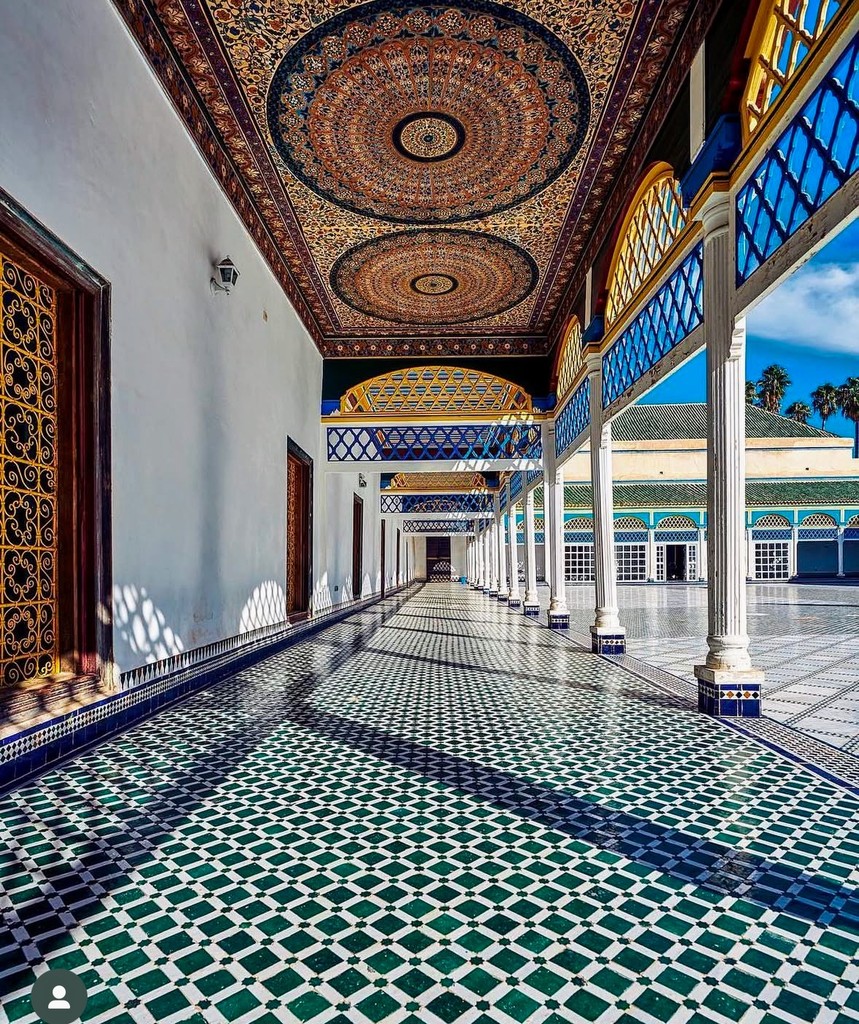
Bahia Palace (Source: Google Maps)
Bahia Palace is a stunning example of Moroccan architecture, built in the late 19th century for a grand vizier. The palace is renowned for its intricate tile work, expansive gardens, and beautifully decorated rooms that reflect the zenith of Moroccan craftsmanship. The design incorporates traditional Islamic elements, such as ornate arches and courtyards, creating a harmonious blend of beauty and functionality. Bahia Palace serves not only as a historical landmark but also as a cultural symbol of Morocco's rich artistic heritage, attracting visitors who admire its elegance and charm.
Dar Si Said Museum
Visit the Dar Si Said Museum, dedicated to Moroccan arts and crafts, housed in a beautiful 19th-century palace.
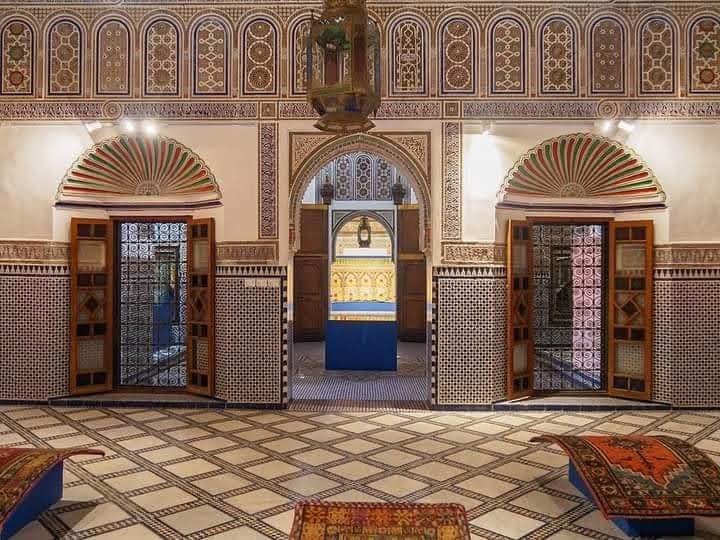
Dar Si Said Museum (Source: Google Maps)
The Dar Si Said Museum, housed in a beautifully restored 19th-century palace, is dedicated to showcasing Moroccan arts and crafts. The museum features a vast collection of artifacts, including textiles, ceramics, and jewelry, illustrating the rich cultural heritage of Morocco. The building itself is an architectural gem, with stunning courtyards and intricate woodwork that exemplify traditional Moroccan design. Visitors can explore the history of Moroccan craftsmanship and gain insight into the artistic traditions that have shaped the country's identity over the centuries.
Le Jardin
Conclude your tour with a visit to Le Jardin, a tranquil eatery in the medina offering a blend of Moroccan and international dishes in a lush setting.

Le Jardin (Source: Google Maps)

Your travels, your rules.
Create your own Free Walking Tours.
Set your preferences, distances and anything you want to do or see.
Completely free, no payment required.